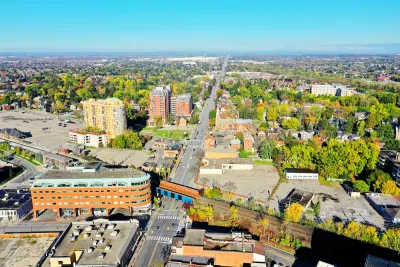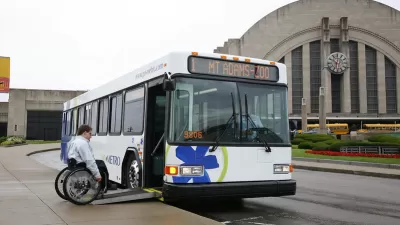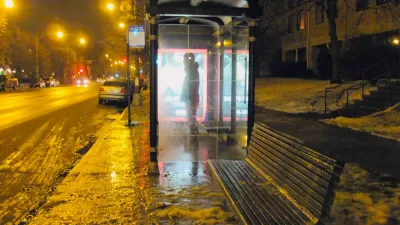Brampton, Ontario used gradual improvements in service to prove that if you build it, they will ride.

When you think of high public transit ridership, suburbs don’t often come to mind. But Brampton, Ontario — a suburb of Toronto — turns this on its head. The town, with a population of 700,000, sees roughly 226,500 bus riders on an average weekday.
As Jonathan English explains in Bloomberg CityLab, Brampton proves that “even in a place without any of the supposed prerequisites, you can still get tens of thousands of people to choose to ride the bus.”
The industrial city is laid out like many North American suburbs, with sprawling warehouses, wide multilane roads, and little pedestrian infrastructure to make walking appealing. So what makes transit more appealing here? “Quite simply, Brampton provides service that is good enough to make getting around by transit reasonable for people who have other transportation options — a group that transit agencies often dub ‘choice riders’ — as well as for people with no other choice.”
Brampton’s bus routes run as often as every five minutes and offer some night service, making the system much more practical for residents. “High frequency also makes transfers feasible, meaning that people can make anywhere-to-anywhere journeys rather than being constrained to going to wherever their local bus happens to go.”
The system improved service gradually, leading to a steady growth in ridership that helped offset the costs of additional service. According to English, Brampton Transit demonstrates a version of ‘induced demand’ for transit: “If you provide a more attractive service, more people will use it.”
FULL STORY: How Did This Suburb Figure Out Mass Transit?

Maui's Vacation Rental Debate Turns Ugly
Verbal attacks, misinformation campaigns and fistfights plague a high-stakes debate to convert thousands of vacation rentals into long-term housing.

Planetizen Federal Action Tracker
A weekly monitor of how Trump’s orders and actions are impacting planners and planning in America.

San Francisco Suspends Traffic Calming Amidst Record Deaths
Citing “a challenging fiscal landscape,” the city will cease the program on the heels of 42 traffic deaths, including 24 pedestrians.

Defunct Pittsburgh Power Plant to Become Residential Tower
A decommissioned steam heat plant will be redeveloped into almost 100 affordable housing units.

Trump Prompts Restructuring of Transportation Research Board in “Unprecedented Overreach”
The TRB has eliminated more than half of its committees including those focused on climate, equity, and cities.

Amtrak Rolls Out New Orleans to Alabama “Mardi Gras” Train
The new service will operate morning and evening departures between Mobile and New Orleans.
Urban Design for Planners 1: Software Tools
This six-course series explores essential urban design concepts using open source software and equips planners with the tools they need to participate fully in the urban design process.
Planning for Universal Design
Learn the tools for implementing Universal Design in planning regulations.
Heyer Gruel & Associates PA
JM Goldson LLC
Custer County Colorado
City of Camden Redevelopment Agency
City of Astoria
Transportation Research & Education Center (TREC) at Portland State University
Jefferson Parish Government
Camden Redevelopment Agency
City of Claremont





























